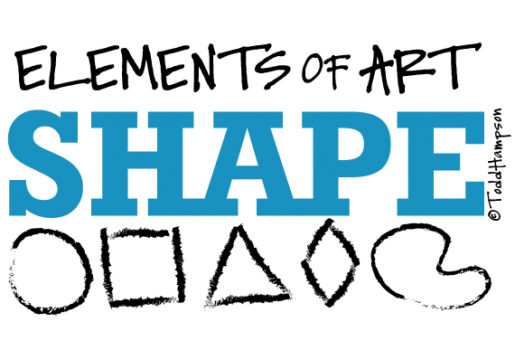
Early in my animation career, I heard visual development artists and art directors mention shape language. Somewhat baffled and intrigued by this term, I started looking into it. I had learned about artistic voice, color scripts, and other strange right-brained terms, but was not familiar with shape language.
Shape language basically refers to how the shapes in a piece of art (character design, background, object, etc.) intentionally tell you something about the story, character, mood, or tone (or all of the above).
In previous posts, I listed the elements and principles of art, then unpacked the first element of art, line. This brings us to the second element of art. Shape. Understanding shape will help you in all aspects of the visual arts. A good understanding of shape will help you break large complex objects (even animals or the human form) into it’s simpler shape components.
Understanding shape will help take the intimidation factor out of drawing and will give you direction in what shape choices you make when creating a character, prop, background, or other type of artwork.
LINES BECOME SHAPES
Shapes are basically made up of closed contour lines. They are two dimensional and do not have depth (or Z-space for my CG friends).
POSITIVE OR NEGATIVE
Shapes can be positive or negative. Positive shapes show the contour or silhouette of an object. Negative space is the space around an object. We often think of positive space, but good artists are just as cognizant and intentional with negative space as they are with positive space.
TYPES OF SHAPES
Shapes can be geometric (triangle, square, circle, etc.) or they can be organic. Organic shapes are freeform. They have no rules and are random. Organic shapes reflect nature. Most objects including characters, props, and landscape elements can be broken down into organic and geometric shapes.
SHAPE LANGUAGE
Once a basic understanding and use of shapes is integrated into your work, you can begin to understand and define more complex uses of shape such as the concept of shape language I mentioned above.
One of the clearest and most well defined use of shape language I use to describe or talk about shape language can be found in the animated film The Rise of the Guardians by DreamWorks. Each of the 6 main characters has a clearly defined shape language which carries emotional, story, character trait, and inter relational weight.
RECOMMENDED BOOK
The book The Art of DreamWorks Rise of the Guardians by Ramin Zahed does a fantastic job of unpacking each character’s shape language, the reasoning behind it, and how it impacted the film. For a great primer on shape language, I highly recommend this book.
